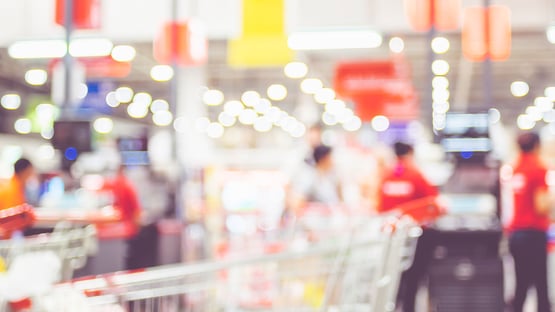Already before COVID-19 many apparel retailers began to close stores, following industry-wide trends where more than 16,000 stores were closed in the UK last year, according to Centre for Retail Research. Now with lockdowns, social distancing and economic disarray, consumer behaviour is changing even more swiftly to embrace new delivery models. Recent numbers from Wunderman Thompson Commerce state that 65 percent of consumers plan to use more digital shopping channels going forward.
And while last mile surveys show some retailers are following suit, with buy online/pick up in-store (BOPIS) adoption increasing, the apparel industry has been slow to adapt to these changing consumer preferences. Possibly due to many being uncertain about where to being their store transformation. While grocery retailers often have an existing electronic shelf label (ESL) system in their stores, the very nature of apparel stores, with price tags on individual items on hangers, have given them a different starting point for moving into Click & Collect.
But there are compelling reasons for apparel retailers to do so despite obstacles, and to do it swiftly. Many apparel retailers have stores in prime locations in cities across the globe, and for many of them, long leases now hamper their alternatives. By transforming their existing stores into so-called dark stores, they could operate Click & Collect centers for their own as well as for a variety of other businesses.
As we mentioned apparel stores face specific challenges in doing this transformation. Most lack the electronic shelf labels that are the starting point of an effective dark store with Click & Collect infrastructure. So the first step for most apparel retailers will be to transform their existing store shelf structure, adding electronic shelf labels with flash functionality to shelves and hanger stands.
The next step is adopting the shelf label software to manage Click & Collect rather than replenishment, as you in simple terms do a reverse replenishment when you do Click & Collect. You also need to add barcode scanners and possibly trolleys for enabling the Click & Collect process. Some of the store routines need to be upgraded, with swifter replenishment and restocking frequency, as well as retraining the existing workforce to do effective order picking.
But it will likely be worth the effort. The apparel industry has some fantastic locations around the globe, many of them now closed or empty. Click & Collect offers an opportunity for the apparel industry to adapt to changing consumer preferences and create a delivery model that is in line with demand. Experiences from other parts of the retail industry show that this need not be particularly challenging and can be very rewarding, possibly leading to a revival of the role of flagship apparel stores.
Duncan Potter, CMO at Pricer
---
This article was published in Apparel Magazine, June 2020
https://issuu.com/supermarketnewsnz/docs/ap_0620_web-5/8



